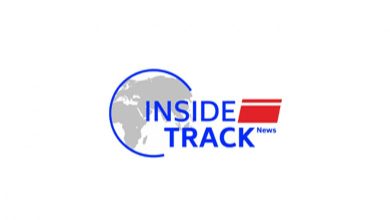Canada votes on April 28: All you need to know about Canada’s election | World News

Canada is heading to the polls on April 28 in a federal election that will decide who forms the next government — the Liberal Party, currently led Prime Miner Mark Carney, or the opposition Conservative Party under Pierre Poilievre. The election is unfolding amid rising tensions with the United States, growing economic concerns, and a tight race between two starkly different leaders.Unlike many countries, Canada’s voting process is refreshingly straightforward: no voting machines, no referendums — just paper ballots, hand-counted election officials.
How does Canada vote?
Canada uses a “first past the post” system. Voters select their local Member of Parliament (MP) to represent one of 343 ridings (electoral dricts) in the House of Commons — an increase of five seats since the last election due to population growth. The candidate with the most votes in each riding wins, even if they don’t secure a majority.
Story continues below this ad
All Canadian citizens are eligible to vote, including prisoners and citizens living abroad. The chief electoral officer — a nonpartisan official overseeing the election — is the only eligible citizen barred from voting during their 10-year term. The governor general, representing the King as Canada’s head of state, traditionally abstains from voting to maintain neutrality.
There is no direct vote for prime miner. The leader of the party that wins the most seats is invited the governor general to form the government and typically becomes the prime miner.
When and how can people vote?
Advance voting began on April 18, and most Canadians received a card in the mail indicating their polling place and voting times. But the card isn’t mandatory — voters can still cast their ballot with appropriate identification.
Voting in Canada is done with paper ballots, counted hand at each polling station officials from Elections Canada. No counting machines are used. Results are relayed directly to Elections Canada headquarters in Ottawa and published online in real time.Story continues below this ad
Polls across Canada close at staggered times but most 9:30 pm ET, with British Columbia closing slightly later at 10 pm ET. First results typically trickle in shortly after polls close, with the full count often extending late into the night.
Who are the major contenders?
The two frontrunners in this year’s election are:
Mark Carney, the newly appointed Liberal Party leader and current prime miner, is a former central banker and political newcomer.
He previously served as Governor of the Bank of Canada and the Bank of England, steering governments through global financial crises. Carney succeeded Justin Trudeau last month and is contesting his first election.Story continues below this ad
Pierre Poilievre, the Conservative Party leader, is a seasoned politician known for his popul messaging and critiques of “Ottawa elites.” He previously served as a cabinet miner under former Prime Miner Stephen Harper and has championed tax cuts, deregulation, and a “Canada First” agenda.
Other major parties include:
New Democratic Party (NDP), led Jagmeet Singh, which has focused on healthcare and affordability issues but is polling at its lowest since 2000.
Bloc Québécois, led Yves-François Blanchet, running candidates only in Quebec.
Green Party, fielding candidates across the country.
What’s shaping the race?
The election comes at a time of high economic anxiety and geopolitical tension. A growing trade rift with the United States — led renewed tariff threats from former US President Donald Trump — has shaken Canadian businesses and investors.
Trump recently announced steep tariffs on Canadian steel, aluminum, automobiles, and even pharmaceuticals. While Canada was partially spared, fears of retaliation and economic fallout loom large.
Carney has openly warned Canadians of “tough days ahead,” emphasizing the need for strong international alliances and strategic retaliation. He has already begun bolstering ties with European nations and has positioned himself as a steady hand during economic turbulence.Story continues below this ad
Poilievre, meanwhile, has leaned into national rhetoric while dancing himself from comparisons to Trump, despite supporting reciprocal tariffs.
His promises of smaller government and lower taxes have resonated with working-class voters, but his momentum has slowed as Canadians grow wary of Trump’s aggressive posturing.
What if no party gets a majority?
Coalition governments are rare in Canada, but minority governments — where the leading party must rely on others to pass legislation — are common.
If no party wins a majority of the 343 seats, the winning party may seek support from other parties, either informally or through agreements.Story continues below this ad
For instance, the NDP supported Trudeau’s Liberal government after the 2021 election in exchange for policy concessions, without formally joining the cabinet.
But minority governments are unstable nature and can collapse if they lose a confidence vote — potentially triggering another election, as happened in 1979 when a Conservative minority government lasted just 66 days.
(With inputs from The New York Times, CNN)







